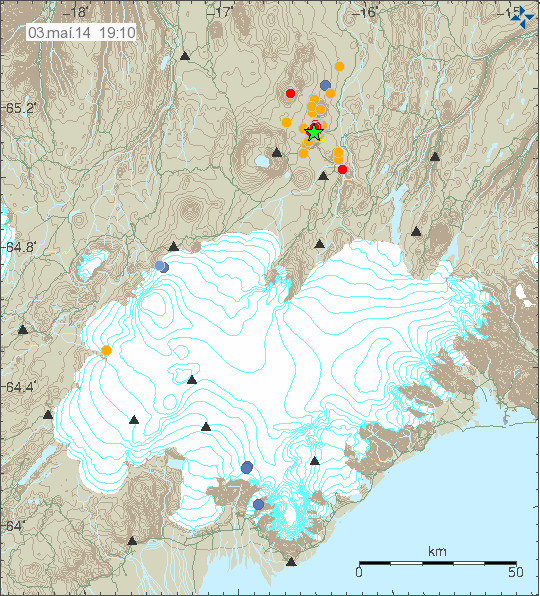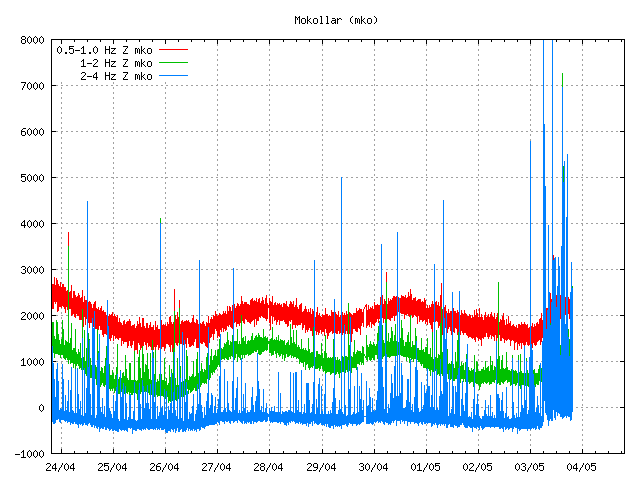Today (03-May-2014) around midnight (00:02 UTC) a earthquake swarm started north of Herðubreiðartöglum (Global Volcanism Program link on Askja volcano can be found here), this area is an small mountain ridge that has built up with regular eruptions over some period of time. The largest earthquake in this swarm took place this morning at 05:49 UTC and had the magnitude of 3,5 with the depth of 7,6 km. After this earthquake took place the swarm increased with many minor earthquakes. So far over 265 earthquakes have been recorded today, this number gets obsoleted quickly since new earthquakes happens ever 1 to 3 minute when I am writing this text.
Tremor plot on nearby SIL stations show that a lot more earthquake activity is taking place than appears on IMO earthquake website. Reason for this is simple, the earthquakes cannot be located since they are only detected at one or two SIL stations, a minimal of three or four SIL station are required for location of each earthquake. The tremor plot in the area also show that no magma is erupting, but that does exclude the possibly that magma injection is responsible for this earthquake swarm. It has not reached the surface and currently there is no eruption taking place at this location. If an eruption takes place in this location, it is going to be Hawaiian eruption with large lava flows.

The earthquake swarm north of Herðubreiðartögl as they appear on Icelandic Meteorological Office maps. Copyright of this image belongs to Icelandic Meteorological Office.

The earthquake rate during this earthquake swarm. Copyright of this image belongs to Icelandic Meteorological Office.

The SIL station in Askja volcano. As can be seen the earthquake swarm is dense and highly active. Copyright of this image belongs to Icelandic Meteorological Office.

The SIL station south of Herðubreiðartögl, this SIL station is called Mókollar and the earthquake swarm appears clearly on it. Copyright of this image belongs to Icelandic Meteorological Office.
Earthquake swarms are common in this area and have been for a long time. Most of that earthquake activity has been contributed to normal tectonic activity in this region (plate tectonic movements). This area also has erupted in the past (last 12,000 years). I don’t think there have been any eruptions in this area in the past 1000 years, at least there are no such signs on the surface (crates, lavas). It is difficult to know what happens in this area for the next few hours to days, all that can be done is to continue monitor the activity that is now taking place. The largest earthquakes appears clearly on my Böðvarshólar geophone (link here), even if the distance is up to 200 km.
Donation note: Please remember to donate. Otherwise I am going to have a rather bad month of May in terms of being broke. Thanks for the support.
